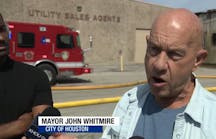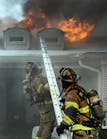First Due: Operational Considerations for Fires that Involve Lithium-ion Batteries
In the past few years, FDNY experienced a sharp increase in fires that involve lithium-ion (li-ion) batteries. Usually, the fires involved e-bikes, e-scooters and other so-called micromobility devices. The devices’ rise in popularity creates several challenges for the department, given that they are stored, charged, sold and/or repaired inside of residential and commercial occupancies.
When the devices’ li-ion cells fail, they release large quantities of toxic flammable gases. When released in an enclosed space and ignite, the gases do so with explosive force. (Such explosions blew out windows and damaged interior structural components.) This leads to an exponential increase in fire conditions, changes in fire dynamics and, thus, a decrease in the time that occupants have to escape, given that their exits often are quickly cut off.
Accounting for battery pack cells
Li-ion batteries are known to reignite even more than 24 hours after all fire was extinguished. Thus, it’s important to account for all cells of a damaged battery pack.
Accounting for the cells can be daunting. Because individual cells often fail violently, cells blow apart from the battery case that holds the cell pack together and scatter. This can result in multiple fires in the area of origin.
Cells must be accounted for before overhaul begins and sheetrock ceilings and walls are pulled. Looking for cells after overhaul greatly increases the odds of not finding all of them and increases the time to conduct the search.
Firefighters must never touch nor hold cells in their hands; use a tool when handling and collecting the cells.
Collected cells must be secured. This can be done initially by placing them in a bathroom tub, a sink or a bucket that’s large enough to fully submerge the cells in water.
When it isn’t practical to submerge cells in water, they can be lowered out of a window in a controlled manner, such as in a bucket. Don’t drop cells from upper floor windows, because impact failure might result. Cells shouldn’t be removed using an elevator. Using the stairs only should be considered when the cells are overpacked or secured.
How to equip and operate
Fires that involve li-ion batteries should be knocked down using a handline, as you would for any other structural fire. Firefighters should apply water until conditions are dormant and no visible flame, gas or smoke is being released from the cell.
Li-ion battery cells that are involved in fire, that are found within a fire area or that are subjected to elevated temperatures must be removed from the area in which members will be operating to perform their tasks.
Full PPE must be worn and SCBA must be used at all times when li-ion batteries that were involved in fire or that were subjected to elevated temperatures are involved.
Author’s note: This isn’t only a sound practice for operating around li-ion cells but also for reducing exposure to fireground smoke, which contains carcinogens.
Outdoor li-ion fires
Li-ion battery fires that occur outside of structures create a different set of concerns for the fire service.
When a li-ion battery fire isn’t in an enclosed space, the risk of an explosive reaction from the li-ion battery is reduced greatly. Of course, the risk of the cells violently failing and flying in all directions still exists.
Similar precautions that are taken for structural fires—including the use of SCBA and full PPE—must be taken when the fire is in an unenclosed location.
Firefighters must be aware that cells sometimes are disposed with household garbage and might be involved in fire, so garbage truck fires are another instance where you might encounter burning li-ion batteries. The crushing action of the garbage truck compressing the trash might be enough to damage a cell and start a fire.
More are inevitable
We undoubtedly will continue to see fires that involve li-ion batteries. However, with small tactical changes, we can manage these incidents safely.

Frank Leeb
Frank Leeb is the managing director of the First Responder Center for Excellence. He previously served as a deputy assistant chief in FDNY, retiring in June 2024 after more than 31 years. During his tenure with FDNY, Leeb held several senior staff positions, including chief of the fire academy, chief of training and chief of safety. He also has been a member of the East Farmingdale, NY, Volunteer Fire Department since 1983. Leeb holds a bachelor's degree in fire service administration from SUNY Empire State and a master’s degree in security studies from the Naval Postgraduate School, Center for Homeland Defense and Security. He served as an advisory panel member for UL's Fire Safety Research Institute's "Study of Coordinated Fire Attack Utilizing Acquired Structures" and was the keynote speaker for Firehouse Expo in 2022 and FireFusion 2024. Leeb is the author of "Cornerstones of Leadership: On and Off the Fireground." He was a presenter at the 2022 and 2023 U.S. Fire Administrator Summit on Fire Prevention and Control. Leeb can be contacted at [email protected].






